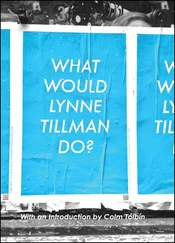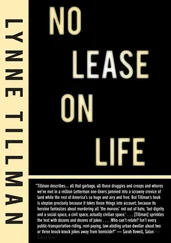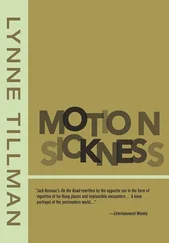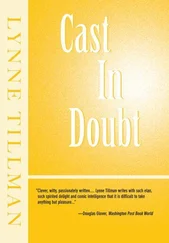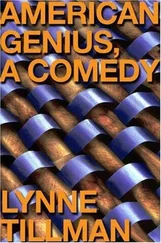The Pope, President Clinton, Henry Kissinger, and an Eagle Scout were on a plane, and it was losing altitude, about to crash. But there were only three parachutes. President Clinton said, “I’m the most powerful leader in the Free World. I have to live,” and he took a parachute and jumped out. Henry Kissinger said, “I’m the smartest man in the world. I have to live,” and he jumped out. The Pope said, “Dear boy, please take the last parachute, I’m an old man.” The Eagle Scout said, “Don’t worry, there are two left. The smartest man in the world jumped out with my backpack.”
Whatever power was, it steamrolled behind the scenes and kept to its own rarefied company, since overexposure vitiated its effects. So, when a president came to town, on a precious visit, people wanted to hear and see him, but they also wanted to be near him. They stretched out their arms and thrust their bodies forward, elbowing their way through the crush for a nod or smile; they waved books in front of him for his autograph, dangled their babies for a kiss, and longed for a pat on the back or a handshake. Madame Realism had listened to people say they’d remember this moment for the rest of their days, the commander in chief, so charismatic and handsome. And, as fast as he had arrived, the president vanished, whisked away by the Secret Service, who surrounded him, until at the door of Air Force One, he turned, smiled, and waved to them one last time.
Without access to power’s hidden manifestations, visibility is tantamount to reality, a possible explanation for the authority of images. Everyone comprised a kind of display case or cabinet of curiosities and became an independent, unbidden picture. Madame Realism dreaded this particular involuntarism; but interiority and subjectivity were invisible, they were not statements. Your carriage, clothes, weight, height, hairstyle, and expression told their story, and what you appeared to be was as much someone else’s creation as yours.
You never get a second chance to make a first impression.
If the President of the United States — POTUS, to any West Wing devotee — dropped his guard, power itself shed a layer of skin. Ever cognizant of that, one of the great politicians of the twentieth century, Lyndon Baines Johnson, called out to visitors while he was on the toilet. Suddenly, Madame Realism took shape nearby, and seeing a visitor’s embarrassment, she shouted to the president, “Hey, what’s up with that?” LBJ laughed mischievously.
It gave her an idea: maybe he had consciously made himself the butt of the joke, before others could. A Beltway joke writer had once said that self-deprecating humor was essential for presidents, though Johnson’s comic spin was extreme and made him into a bathroom joke. Presidential slips of the tongue, accidents and mishaps supposedly humanized the anointed, but the unwitting clowns still wielded power. Laughter was aimed at the mighty to level the playing field, but who chose the field? To her, the jokes also zeroed in on powerlessness; and Madame Realism trusted in their uneven and topsy-turvy honesty. To defame, derogate, offend, satirize, parody, or exaggerate was not to lie, because in humor’s province, other truths govern.
“Any American who is prepared to run for president should
automatically, by definition, be disqualified from ever doing so.”
— Gore Vidal
She herself followed, whenever possible, G.K. Chesterton’s adage: “For views I look out of the window, my opinions I keep to myself.” But presidents were nothing if not opinions, and, at any moment, they had to give one. Maybe since they were kids, they had wished and vied for importance, to pronounce and pontificate, and they had to be right or they’d die. The public hoped for a strong, honest leader, but more and more it grew skeptical of buzz and hype, of obfuscation passing as answer, of politicians’ lies. Yet who one called a liar conformed to party of choice.
Some people are talking, and one of them says, “All Republicans are assholes.”
Another says, “Hey, I resent that!”
First person says, “Why, are you a Republican?”
Second person answers, “No, I’m an asshole!”
Some jokes were all-purpose, for any climate. Madame Realism first heard the asshole joke about lawyers, but most proper nouns would fit, from Democrats to plumbers, teachers to artists. Jokes could be indiscriminate about their subjects, since the only necessity was a good punchline that confronted expectation with surprise, puncturing belief, supposition, or image.
“Mr. Bush’s popularity has taken some serious hits in recent months, but the new survey marks the first time that over fifty percent of respondents indicated that they wished the president was a figment of their imagination.” —Andy Borowitz, The Borowitz Report
Her fantasies often skewered Madame Realism, threw her for a loop, but at times they fashioned her as the host of a late-night talk show, when, like Jon Stewart and Stephen Colbert, she held the best hand. Madame Realism imagined questioning presidential also-rans, who had sacrificed themselves on the altar of glory and ambition — Al Gore, John Kerry, the ghost of Adlai Stevenson. Suddenly Adlai stated, out of nowhere, “JFK never forgave me, you know, for not supporting him at the Democratic convention.” Then a familiar, haunted look darkened his brown eyes, and pathos quickly soured their banter. Pathos didn’t fly on late-night TV.
Anyone but an action hero understood that even a rational decision or intelligent tactic might awaken unforeseen forces equipped with their own anarchic armies, and some presidents agonized under mighty power’s heft. In portraits of him, Abraham Lincoln morphed from eager Young Abe, saucy, wry candidate for Congress from Illinois, to a father overwhelmed with sadness at his young son’s death, to a gravely depressed man, the president who took the nation to its only civil war. Madame Realism treasured soulful Abraham Lincoln, because he appeared available to her contemporary comprehension, a candidate ripe for psychoanalysis. She pictured speaking kindly to him, late at night, after Mary had gone to sleep, the White House dead and dark, when words streamed from him, and, as he talked about his early days, his ravaged face lit up, remembering life’s promise.
What do you call Ann Coulter and Jerry Falwell in the front seat of a car?
Two airbags.
In the nineteenth century, even Thomas Carlyle believed “all that a man does is physiognomical of him.” A face revealed a person’s character and disposition, and, if skilled in reading it, like physiognomists who were its natural science proponents, why human beings acted the way they did could be discerned. Also, their future behavior might be predicted. Criminals and the insane, especially, were analyzed, because the aberrant worried the normal, and, consequently, deranged minds had to be isolated from so-called sane ones. The sane felt crazy around the insane.
Though face-reading as a science had gone the way of believing the world was flat — poor Galileo! — facial expressions dominated human beings’ reactions; each instinctively examined the other for evidence of treachery, doubt, love, fear, and anger. Defeat and success etched an ever-changing portrait of the aging face that, unlike Dorian Gray’s, mutated in plain sight. Animals relied on their senses for survival, but beauty made all fools, democratically. And though it is constantly asserted that character is revealed by facial structure and skin, plastic surgery’s triumphal march through society must designate new standards. For instance, Madame Realism asked herself, how do you immediately judge, on what basis, a person’s character after five facelifts?
“Images are the brood of desire.”
Читать дальше

